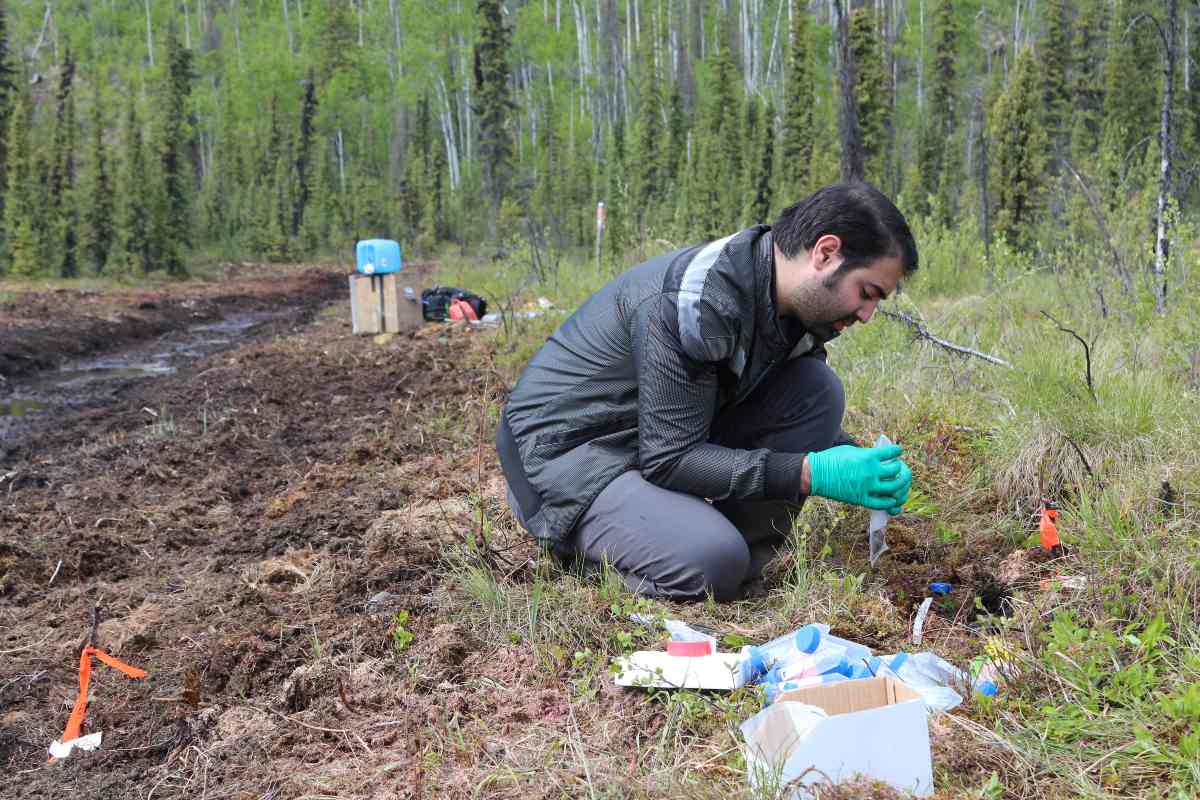
PhD student Alireza Saidi-Mehrabad is pictured here in doing field work, collecting samples used in the paper.
Microbial communities in Arctic permafrost changed drastically at the end of the ice age—and this shift could happen again due to modern climate change, according to a new study by University of Alberta scientists.
In this study, researchers compared the microbial communities found in permafrost formed during the last Ice Age, at the end of the geological epoch known as the Pleistocene, to those at the beginning of the modern era, known as the Holocene.
“We found that both the microbial communities and the chemical parameters are stable within each era until they cross a threshold, driven by the change in climate,” explained Brian Lanoil, associate professor in the Department of Biological Sciences and co-author on the study. “After that threshold, there is an abrupt switch to a new microbial community and new soil chemistry. We argue that modern climate change could lead to a similar transition in state for soils in Arctic ecosystems with unknown consequences.”
And the researchers hypothesize that the change in soil due to modern, human-driven climate change may have the same effect, creating a new soil profile unfavourable to existing microbial communities with widespread effects.
“Our findings may also explain the reason behind the contradictory results obtained from field and laboratory soil warming experiments,” added Alireza Saidi-Mehrabad, PhD student and lead author. “This difference is likely because field-based studies involve moderate heating of the soil. In contrast, in laboratory-based incubations, a small amount of permafrost thaw could result in rapid response to increased temperature, leading to major changes in both soil chemistry and microbial community structure.”
Soil microbes are important for many ecosystem functions, and drastic changes to the microbe community may lead to many changes in how those soils function. For instance, microbes in the current environment are responsible for processing carbon and nitrogen, and a change in these systems could have the potential to affect carbon and nitrogen cycles in Arctic ecosystems. But further research is required to better understand the function of new microbial communities that form after crossing the threshold and their potential effects on the wider ecosystem.
“Since soils are where plants grow and where nearly all terrestrial life lives, this could have big impacts on the entire Arctic ecosystem,” explained Lanoil. “Our work shows this happened before, and it is possible that this could happen again as the result of current climate change.”
Other collaborators on this research include: Duane Froese, professor in the Department of Earth and Atmospheric Sciences and Canada Research Chair in Northern Environmental Change; Patrick Neuberger, former graduate student in the Lanoil lab; and Morteza Hajihosseini, graduate student in the University of Alberta’s School of Public Health.
Funding for this research was provided by the Alberta Innovates Graduate Fellowship, ArcticNet, the Natural Sciences and Engineering Research Council of Canada (NSERC), the Northern Science Training Program, and the University of Alberta’s Northern Research Award.
The paper, "Permafrost microbial community structure changes across the Pleistocene-Holocene boundary," was published in Frontiers in Environmental Science (doi:10.3389/fenvs.2020.00133).